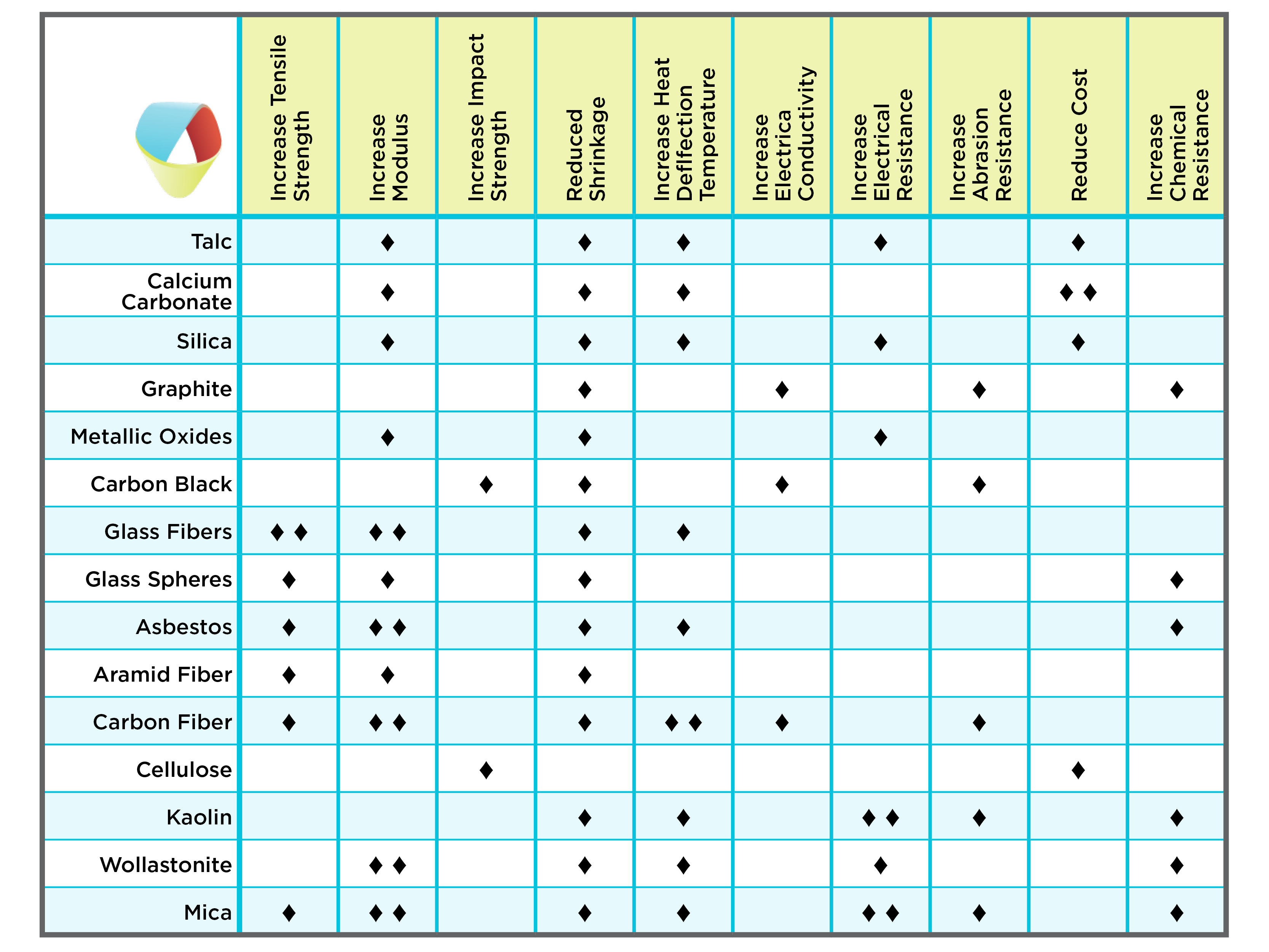Choosing the Right Polymer Additives (Part 2)
The Effects of Fillers
Fillers are additives incorporated into a plastic to improve a desired property or reduce cost without diminishing desired properties. Most commonly they are used to increase stiffness, tensile strength, and impact resistance. However, certain fillers may bring about improved electrical properties, thermal properties, or chemical resistance. Fillers are generally inorganic such as natural and synthetic minerals, metals, or glass. Less frequently, organic fillers like aromatic polyamide fibers are used to improve mechanical or physical properties. Fillers may be divided into one of two groups, fibrous or particulate.
It is important to ensure good dispersion and compatibility of the filler with the polymer it is incorporated in. A filler used to improve impact resistance, for example, may have the opposite effect if the dispersion quality is poor or the polymer - filler interface is weak. For this reason, coupling agents are employed to strengthen the attraction of the polymer to the filler. Silane coupling agents are most common and are used extensively to increase the attraction of the polymer matrix to glass fillers such as glass spheres and glass fibers.
Size and shape are other aspects to consider when selecting a filler. Mica, because of its plate-like shape, is used to reduce the moisture vapor and O2 transmission rate in plastics. The high aspect ratio of fibers make them effective in increasing tensile strength and flexural modulus. Diatomaceous Earth is used to reduce the coefficient of friction by changing a material’s surface roughness. The small size of nano particles provides an extremely high surface area to weight ratio of the filler and have been used for polymer – polymer interfacial attraction in otherwise non compatible polymer blends. Below are some of the more common fillers used and how they impact the end-use material properties.

Related Links:
Choosing the Right Polymer Additives: Part 1 - Stabilizers
Materials for Custom Plastic Extrusion
Blog by Rick Bass (R&D)


